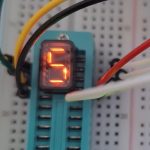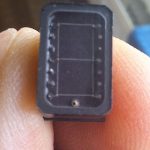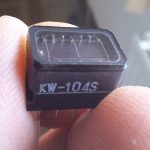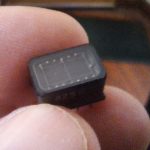I’d thought I’d share these cool retro 7 segment displays I obtained from an old aircraft radio. They are Wamco KW-104S direct view incandescent filament displays which are compatible with LED display driver code – just treat them like common anode 7 segment LED displays. Easy! You just have to bear in mind that they need an operating voltage of 4 volts and they draw around 15mA per segment. Due to their self current limiting nature, they do not need current limiting resistors between the driver chip and the display. Note I said driver chip as with the current drawn from these displays you are best using a power shift register such as the TPIC6B595 or a transistor array rather than driving them from the microcontroller or shift register pins directly.
A datasheet can be found here https://www.wamcoinc.com/assets/pdf/Display%20Catalog.pdf
Some images and a video




